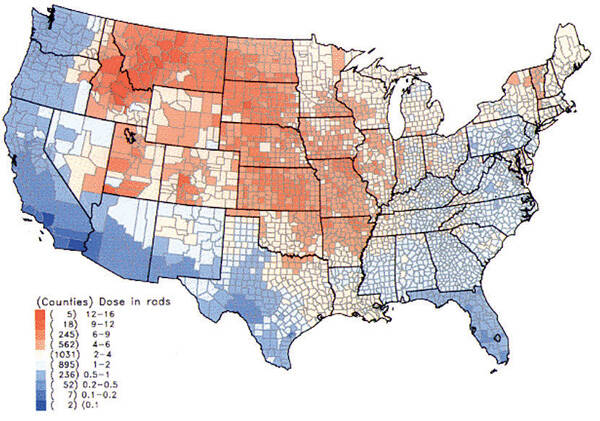News & Articles
Browse all content by date.

“The US military continues to rank among the world’s largest generators of hazardous waste, producing nearly a ton of toxic pollution every minute.” -- William Thomas, Scorched Earth: The Military’s Assault on the Environment
Military history is dirty in the literal sense too. The Pentagon is the single largest generator of hazardous wastes in the United States, adding some 500,000 tons of toxins annually. In 2006, the US military generated more than one-third of the country’s toxic waste.
In 1978, the federal government acknowledged that 50 US nuclear sites were a human health hazard. Leukemia and other cancers in nearby areas were statistically more prevalent that in normal towns. By 1989, the government identified 3,200 sites at 100 nuclear weapons facilities that had contaminated soil or ground water, or both. In 1992, the New York Times reported that we had up to 45,000 potentially radioactive sites, 20,000 of them government-owned.
Testifying to Congress in 1988, J. Dexter Peach, a comptroller at the US General Accounting Office, said, “[T]o clean up thousands of sites owned by the federal Government at which uncontained radioactive wastes are contaminating soil and ground water… may be the Government’s biggest challenge.” George Kritz, a former Energy Department official with the remedial action division in Germantown, Maryland, told the New York Times, “We’re going to be in this cleanup business 50, 100, 150 years from now.”
Pollution from nuclear weapons and reactor fuel production have radioactively contaminated so much of the country that official cost estimates of a merely partial clean-up are $365 billion and climbing. The National Academy of Sciences concluded in the year 2,000 that large areas cannot be cleaned to “safe” levels. Part of the reason for the grim dilemma is that the government discovered the same year that 10 times more plutonium wastes from weapons production were dumped “into soil or buried in flimsy containers” than was earlier estimated.
All the radioactive contamination in the world can be considered military pollution, because the whole of the nuclear power complex was born of the atom bomb. Ferociously radioactive waste uranium fuel rods from civil nuclear power reactors were initially intended for use in nuclear bomb production. Only the failure of waste fuel “reprocessing” ended the civilian waste-to-weapons program. Still, tritium gas for the nuclear arsenal has been produced at civilian power reactors in Tennessee for decades, putting the lie to official distinctions between civilian and military programs and “atoms for peace.” Nuclear power is the bomb.
Radioactive contamination of the environment occurs all day, every day, as a result of the normal operation of commercial nuclear power reactors, military and civilian research reactors, shipboard propulsion reactors, as well as the transportation and use of radioactive isotopes in medicine, industry, science, war and war preparations. Nuclear reactors cannot operate without ongoing releases of radioactive water and gases that are vented continuously in order to control the pressure, temperature and humidity inside their cores, and to keep radiation levels from exceeding workplace exposure limits for employees.
The bio-accumulation of long-lived radioactive pollution from nuclear power and weapons presents a mostly unregulated and nearly inestimable threat to human and environmental health. Radiation hasn’t caused all the cancer on earth but it must be considered in view of the combined and cumulative effects of 80,000 other mostly unmonitored industrial chemicals that are routinely released to the environment and found in the food chain.
In 1969, Ernest Sternglass of the University of Pittsburgh Medical School published “Infant Mortality and Nuclear Tests” in the Bulletin of the Atomic Scientists. Sternglass found that fallout from above-ground bomb testing since 1951 may have slowed the decline in infant mortality (deaths of infants younger than 1 year) so much that it could be the cause of 375,000 infant deaths. The rate of decline returned to normal after open-air tests ended in 1963.
In 2002, the US National Cancer Institute reported that 80,000 cancers in the US -- 15,000 of which would be fatal -- are attributable to just the iodine-131 in 90 of the government’s above-ground bomb tests.
The late Dr. Rosalie Bertell estimated that as many 385 million cancers and 175 million cancer deaths worldwide could be attributed to radioactive pollution from bomb building and testing, and reactor accidents and leaks. Arjun Makhijani, President of the Institute for Energy and Environmental Research, summed up his analysis in Nuclear Wastelands this way: “It is evident that nuclear weapons have profoundly damaged the very people and lands that they were supposed to protect through the adverse consequences of production and testing.”
| Tweet |

